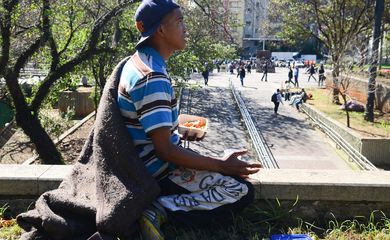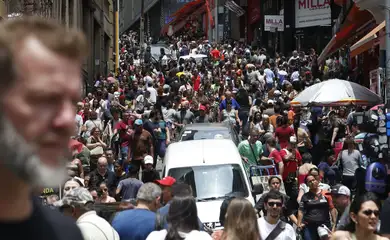Homeless population in Brazil rises by 25% in one year

The number of people living on the streets across Brazil has risen by approximately 25 percent in one year. In December 2023, 261,653 people were in this situation, but by the end of 2024, this number had grown to 327,925. The data come from the latest survey by the Brazilian Observatory of Public Policies for the Homeless Population, part of the Federal University of Minas Gerais.

The figure recorded in December 2024 is 14 times higher than 11 years ago, when 22,922 people were living on the streets in Brazil.
The survey relied on data from the Single Registry of Social Programs (CadÚnico), which tracks beneficiaries of social policies like Bolsa Família income transfer program and the Continuous Cash Benefit (BPC). This registry serves as a tool for identifying vulnerable populations and quantifying federal government transfers to municipalities.
The Southeast region accounts for 63 percent of the country's homeless population, with 204,714 people, followed by the Northeast, which has 47,419 individuals (14%).
In São Paulo, which represents 43 percent of Brazil's total homeless population, the number of homeless individuals surged from 106,857 in December 2023 to 139,799 in December 2024. This increase is a staggering 12-fold compared to December 2013, when the count was just 10,890. Following São Paulo, the states with the highest homeless populations are Rio de Janeiro, with 30,801, and Minas Gerais, with 30,244.
According to André Luiz Freitas Dias, coordinator of the Brazilian Observatory of Public Policies for the Homeless, the rise in this population can be attributed to the strengthening of CadÚnico as the primary tool for registering this issue and accessing the country's social policies. However, it is also driven by the lack or inadequacy of comprehensive public policies addressing the needs of the homeless, such as housing, employment, and education.
The survey also revealed that seven out of ten homeless individuals in the country have not completed elementary school, and 11 percent are illiterate, significantly hindering their ability to access job opportunities in urban areas.
In an interview with Agência Brasil, Robson César Correia de Mendonça, from the São Paulo State Movement of Homeless People, pointed out that the 2022 Demographic Census, conducted by Brazil´s statistics agency IBGE, revealed approximately 590,000 vacant private properties in the city of São Paulo. This number far exceeds the 92,556 homeless individuals currently living in the city, according to the Observatory.
Mendonça argues that the simultaneous rise in the homeless population and the large number of vacant homes across the country indicates a "lack of political will to address the issue."
When asked by Agência Brasil, the São Paulo State Secretariat for Social Development did not provide data on the number of people living on the streets in the state. However, it stated that last year, of the approximately BRL 240 million allocated to municipalities from the State Social Assistance Fund, around BRL 156 million were directed by municipal administrations to Medium and High Complexity Special Social Protection services.





